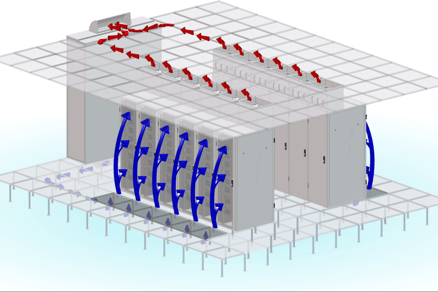
Many years ago, it was important to stress the necessity of ignoring return air- at least, ignore it after it was isolated from the rest of the data center. It’s out of the room, so it may as well be forgotten about.
In those days, the concept of cooling was fairly simple and straightforward. There was no dichotomy of comfort cooling versus data center cooling.
Addressing the model of comfort cooling was an easy starting point: room temperature was controlled by a thermostat that responded to the return air temperature.
Yet, the need to identify some distinctions between these two models appeared as data center cooling slowly became both an art and a science. The point of departure was that with better airflow management practices, return air could be isolated from the data center with no impact on its data communications hardware.
This realization opened a door into new discussions between operators about the benefits of supply set-points and server inlet control points, as well as exploiting the periodically-relaxed, maximum-operating temperature thresholds of the equipment.

Best practices developed to separate supply and return air within each data center as completely as possible, and those practices extended into plenum as well.
If return plenum was just repurposed space above a suspended ceiling, then the ceiling barrier itself should have maintained the integrity of supply and return air separation.
There were no longer any mysteries present – no missing ceiling tiles or vents, other than in hot aisles and in some form of plenum extension attached to the CRACs or CRAHs.
This learned discipline meant that sealing unused rack units, cable access ports, and non-standard flow paths should have always been applied to the return plenum as well.
Continue reading on Upsite's webpage.
Contact your local Accu-Tech representative to learn more about Upsite solutions, or check out their vendor page here.





.png?width=58&height=58&name=X_logo_2023_(white).png)
